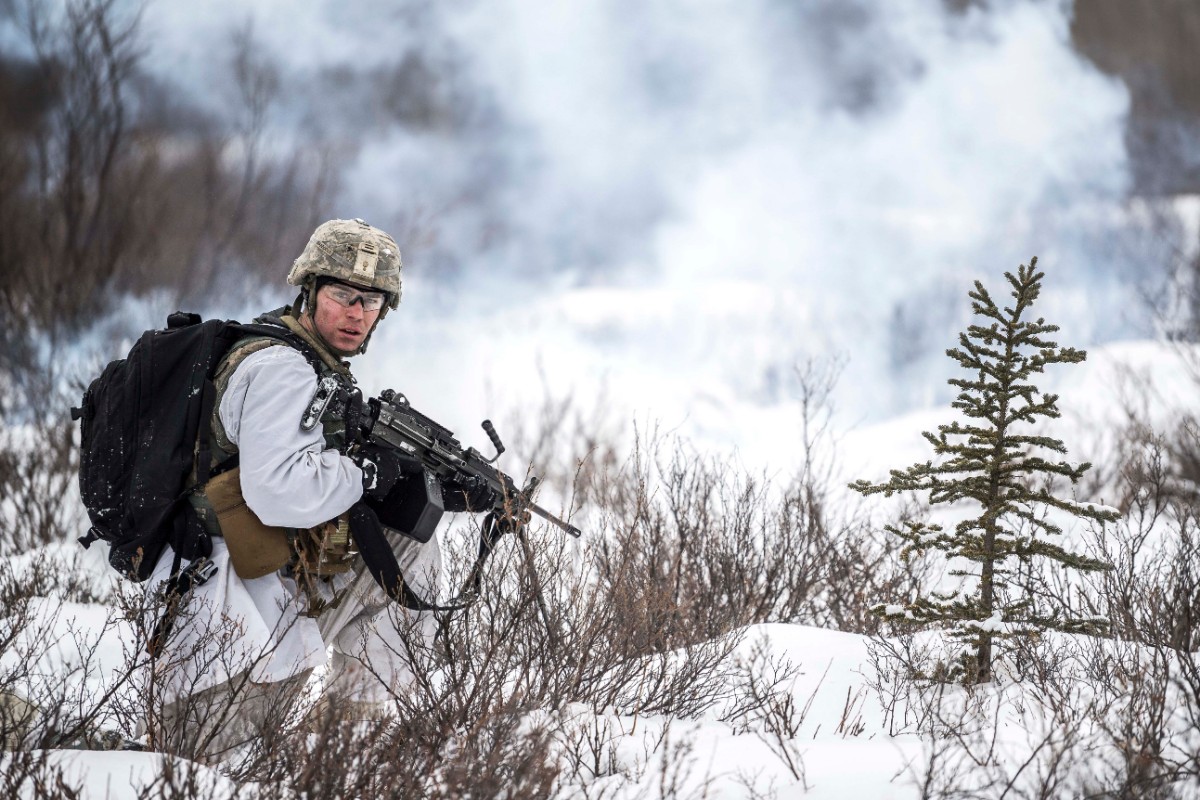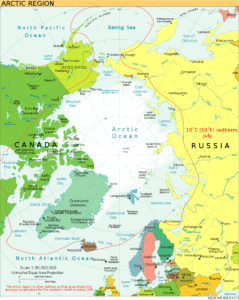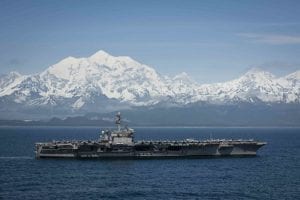 Photo Credit: US Department of Defense
Photo Credit: US Department of Defense
Is the US Finally Taking the Melting Arctic Seriously?
On May 4, 2018, the Chief of Naval Operations, Adm. John Richardson, announced the reactivation of the US 2nd Fleet to operate in the north Atlantic and Arctic after it had been deactivated in 2011. On May 29, 2019, a year after the reactivation announcement, the 2nd Fleet reached initial operational capacity.
Implications for US National Defense
The 2018 US National Defense Strategy established great power competition as the top priority for the Department of Defense. The strategy clearly labeled two states – China and Russia – as the primary competitors to the US.
When announcing the reactivation of the 2nd Fleet Adm. Richardson stated, “Our National Defense Strategy makes clear that we’re back in an era of great power competition as the security environment continues to grow more challenging and complex. That’s why today, we’re standing up Second Fleet to address these changes, particularly in the north Atlantic.”
Changes in the north Atlantic include two main components: melting sea ice in the Arctic and the resurgence of Russia.
Competition in the Arctic
The Arctic is one of the most vulnerable regions in the world to climate change. As Arctic sea ice melts, the Arctic Ocean becomes navigable for longer stretches each year.
As the Arctic opens up, so too does access to 1/3 of the world’s hydrocarbon reserves, access to new fisheries, and access to new shipping routes from Asia to North America and Europe.

Russia’s Arctic coastline stretches 24,000+ kilometers. (Credit: CIA World Factbook).
The Arctic has always been an important part of Russian policy, especially given the 24,000+ kilometers of Arctic coastline in Russia. The warming of the Arctic, and thus increased accessibility to region, has caught the attention of Russian President Vladimir Putin. President Putin said at the 2019 International Arctic Forum in St. Petersburg that one-tenth of all Russian investment is in the Arctic region.
According to ASP COO Andrew Holland, the investment in military assets in the Arctic serves a strategic purpose for Moscow. “The larger military outposts are meant as an easy form of saber rattling, as well as a way to provide protection for the very large amount of investment into the Northern Fleet, based out of Murmansk.”
In recent years the US has shown much less interest in the region than their Russian counterparts. The US Navy released a new Arctic Strategy earlier in 2019. Experts that read the new strategy were “massively underwhelmed” and said the strategy read as if the US Navy was not interested in the Arctic.
However, the activation of the 2nd Fleet finally demonstrates the US Navy is interested in the Arctic and countering Russian activity in the region.
Commander of the 2nd Fleet, Vice Adm. Andrew Lewis stated, “The North Atlantic has some of the world’s busiest shipping lanes, and with the opening of waterways in the Arctic, this traffic will only grow. This is a fact acknowledged by both our allies and competitors, and as such, it is critically important U.S. 2nd Fleet reinvigorates the way our forces are employed in this influential theater.”
Exercise Northern Edge
Further evidence of the US taking interest in the Arctic is Exercise Northern Edge. The joint training exercise, hosted by US Indo-Pacific Command, included approximately 10,000 US military personnel operating in central Alaska and the Gulf of Alaska in mid-May 2019.
A strong sign of a new commitment to the Arctic is the presence of the Theodore Roosevelt Carrier Strike Group in the exercise. Exercise Northern Edge 2019 is the first time in a decade that an aircraft carrier is in Alaska for the exercise.

The aircraft carrier USS Theodore Roosevelt (CVN 71) transits the Gulf of Alaska. (Credit: US Navy, Mass Communication Specialist 2nd Class Anthony J. Rivera)
Commander of the Theodore Roosevelt Carrier Strike Group, Rear Adm. Dan Dwyer, said, “The Alaskan (operating area) is critical to the INDO-PACOM region. The expansive training areas offered here in Alaska provide us with an excellent environment to fully engage and conduct integrated, large-scale joint training exercises unmatched anywhere else in the United States, I must say. The Arctic ice cap is as small as we’ve seen in our lifetime, and this gives rise to increasing trade routes and sea lanes that are open more times of the year, so it’s incredibly important that we as an Arctic nation continue to operate in this area to protect this vital area to our national defense.”
Exercise Northern Edge and the reactivation of the 2nd Fleet are both steps in the right direction for US Arctic policy. However, future involvement in the Arctic must come in the form of investment, specifically in icebreakers.
As Andrew Holland said, “Currently, the U.S. is critically limited in access to polar regions by our lack of icebreakers, harming missions important for science and national security. ” Further engagement and investment in the Arctic is critical if the U.S. is seriously about combatting Russian aggression.





